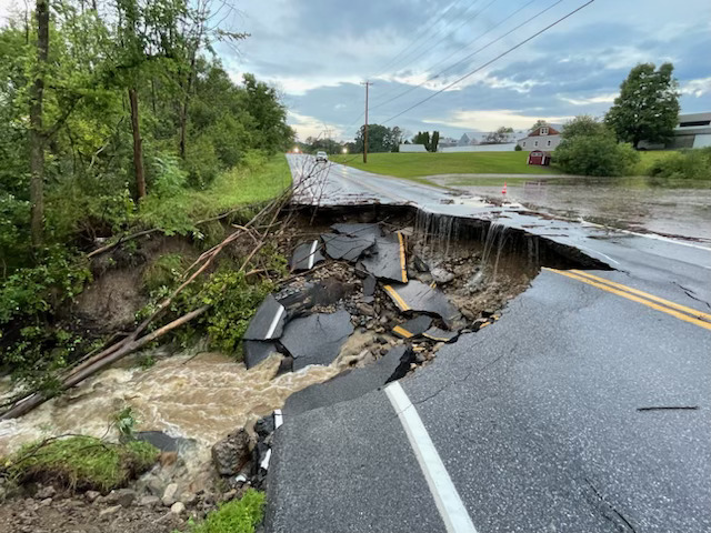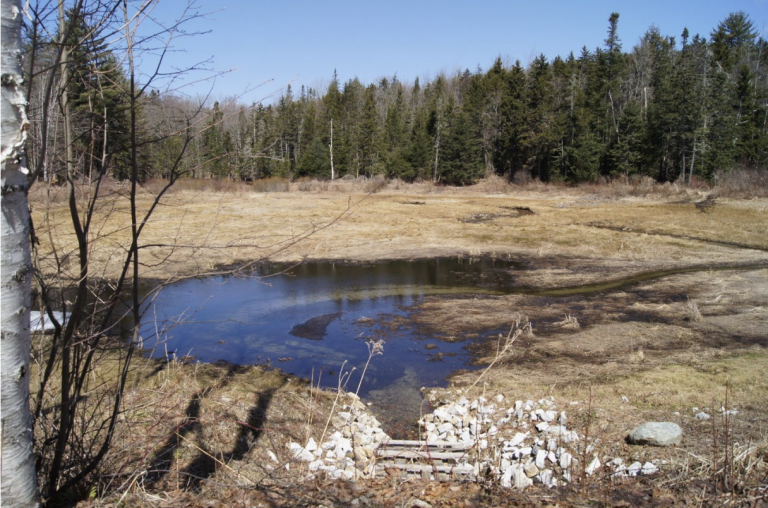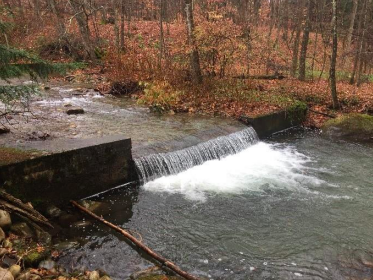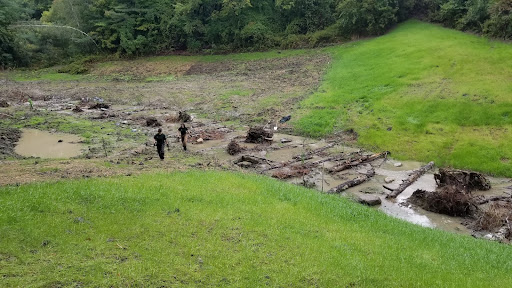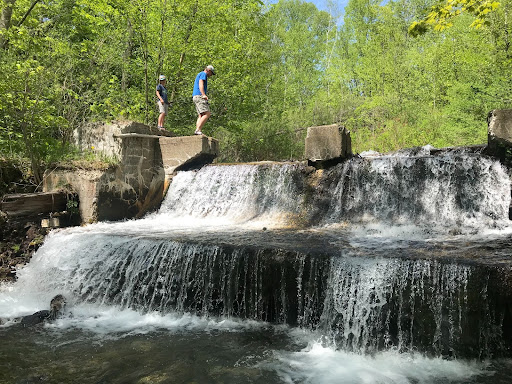Dunklee Pond Dam, Rutland (2021)

The Dunklee Pond Dam in Rutland was completed in October 2021 with the support of The Vermont River Conservancy and Vermont Natural Resources Council with many partners including The New England Interstate Water Pollution Control Commission (NEIWPCC) in partnership with the Lake Champlain Basin Program, U.S. Fish and Wildlife Service, the National Fish Passage Program, and Vermont Department of Environmental Conservation – Clean Water Initiative Program, SLR Engineers of Waterbury, and Kings Trucking and Excavating of Cambridge.
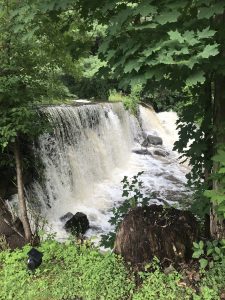
The goal of the project was to improve river habitat and water quality, while reducing the safety risks associated with the derelict and breached 75-ft long and 10-ft high concrete dam. Dunklee Pond Dam was initially constructed in 1792 to operate a small linseed oil mill, followed by a pencil mill, a lumber mill and tannery, and then a commercial ice harvesting pond.
The dam was classified as a Significant Hazard Potential Dam, meaning there was potential for loss of life and “appreciable” economic loss if it failed, and it posed a substantial flood risk to nearby homes. Removing the dam not only improved safety for people and property, it reconnected approximately 13 miles of aquatic habitat along the Tenney Brook, a tributary of Otter Creek. Reconnecting the stream involved removing 11,300 cubic yards of sediment from the stream bed, and the creation of a new 900 ft pilot stream channel and floodplain in the former Dunklee Pond. The 1.9 acres of floodplain has been mulched and seeded with native plant species, and additional plantings of native trees and shrubs were completed in May of 2022.
According to River Management Engineer Todd Menees, “the dam removal project excavated about 400 pounds of phosphorus that would otherwise have reached Lake Champlain and the restored floodplain wetlands will trap future sediments from contributing to the cyanobacteria blooms in Lake Champlain.” The effects of this dam removal will be felt from the homeowners near the dam, to the shores of Lake Champlain.
Photo credits: Karina Dailey, Vermont Natural Resources Council



